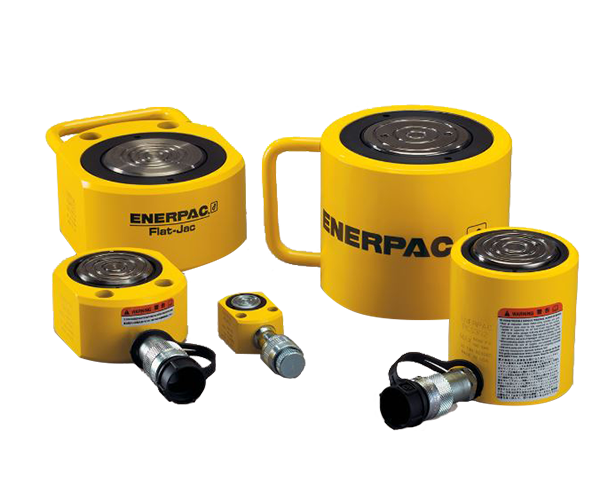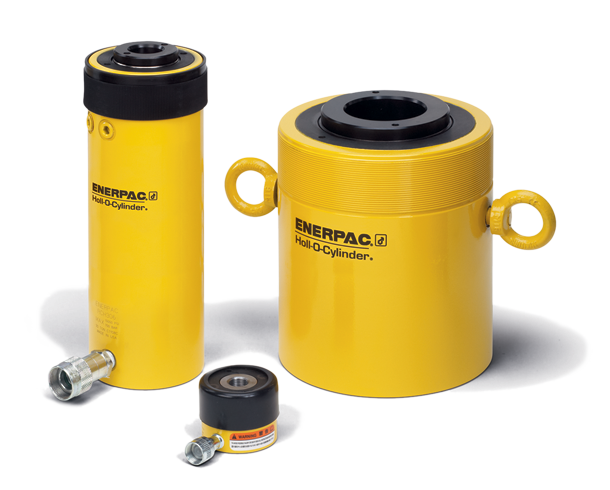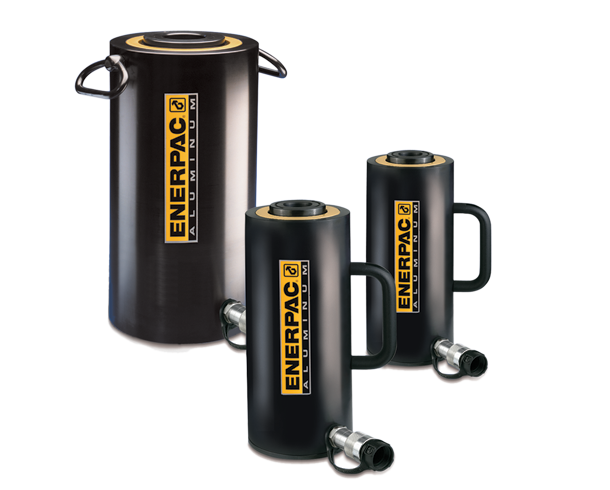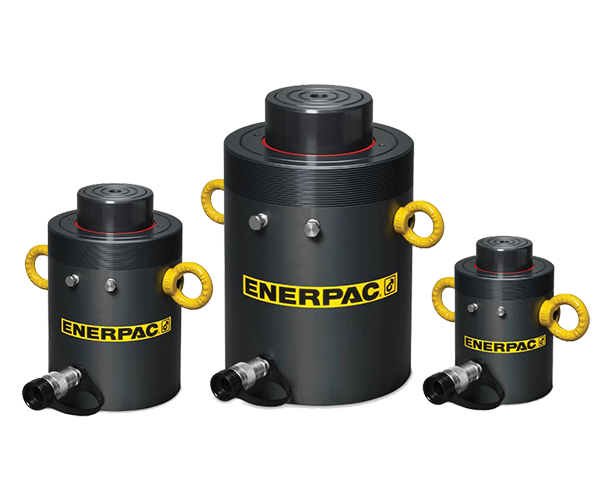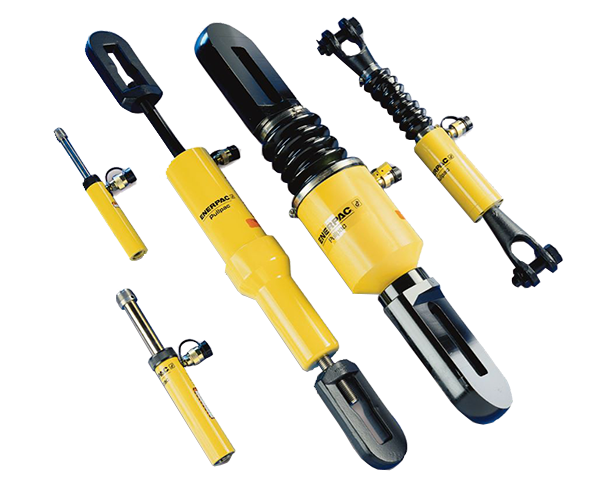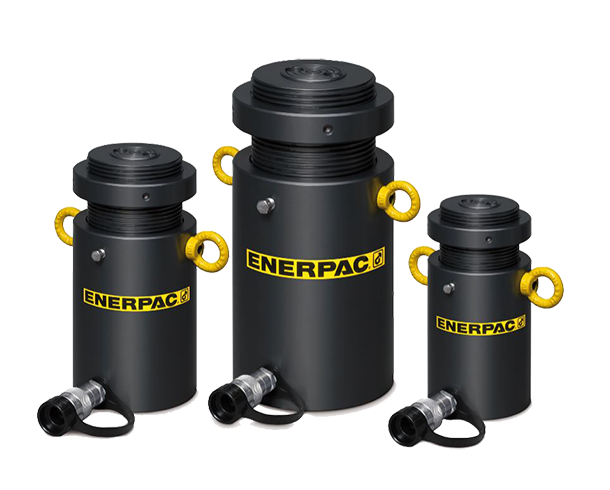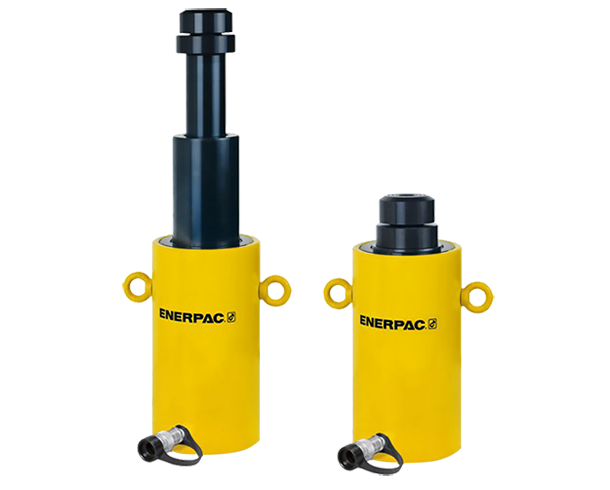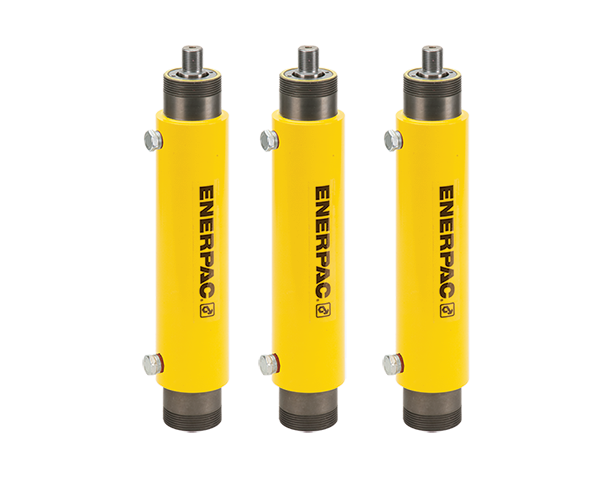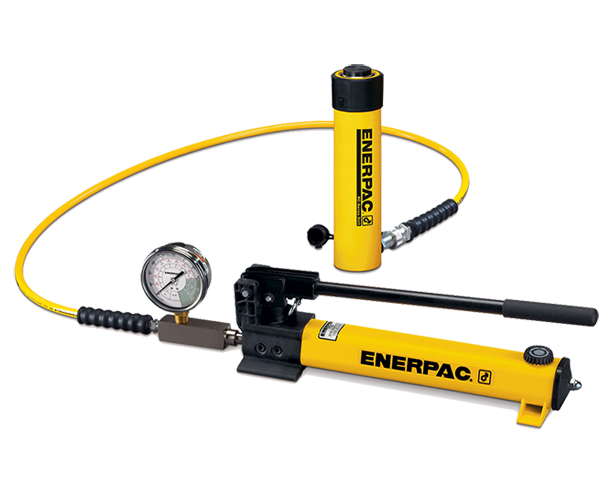Enerpac Hydraulic Cylinders
The UK's Authorised Distributor and Service Centre
Home > Enerpac Hydraulic Cylinders
Overview
Enerpac hydraulic cylinders are available in hundreds of different configurations. Whatever the industrial application…. lifting, pushing, pulling, bending, holding…..whatever the force capacity, stroke length or size restrictions….single or double acting, solid or hollow plunger, you can be sure that Enerpac has the cylinder to suit your high force application. As authorised Enerpac hydraulic cylinders suppliers we offer a full range of options to meet whatever needs you have.
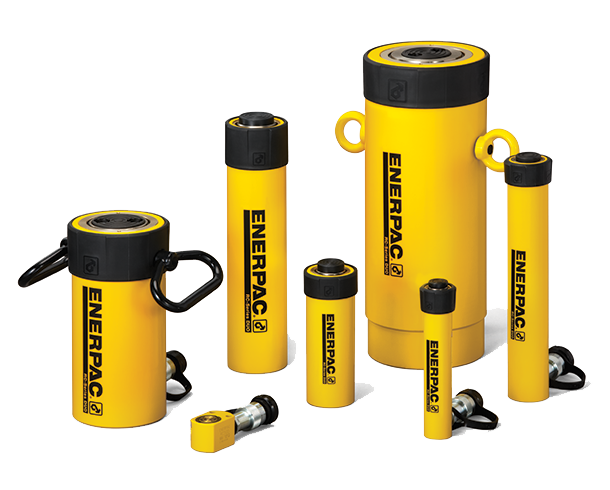
General Purpose Cylinders
Low Height Cylinders
Hollow Plunger Cylinders
Lightweight Aluminium Cylinders
High Tonnage Cylinders
Pull Cylinders
Lock Nut Cylinders
Telescopic Cylinders
Precision Production Cylinders
Cylinder and Pump Sets
Hydraulic Cylinders FAQ's
A hydraulic cylinder is a hydraulic actuator that converts hydraulic energy into the mechanical movement to produce linear motion. A hydraulic cylinder is a component of a machine's hydraulic system. When the machine's hydraulic system is activated, the hydraulic cylinder acts like a muscle, generating movement.
A hydraulic ram operates by pumping external fluid into both sides of a cylinder simultaneously. This creates a high-pressure side and a low-pressure side within the cylinder, depending on the weight that the ram is attempting to transfer.
In comparison to its double-acting predecessor, the single-acting cylinder is more straightforward. Because there are fewer parts, there is less chance for failure, which is good news for maintenance.
You can use single-acting cylinders for simple tasks, such as when a quick or controlled retract isn't necessary. Threaded versions of hollow plungers for pulling applications are also available.
Hydraulic fluid can be pumped to the plunger on both sides of a double-acting hydraulic cylinder. Both ends of the piston rod can be connected to each other, allowing it to move in both directions. In addition to providing more control, the additional port ensures that the plunger always returns to its starting location during retraction.
Double-acting cylinders are preferable for projects requiring repeatable accuracy due to their faster and more predictable retractions.
There are telescopic cylinders and jack cylinders.
Telescopic Cylinders: a cylinder within a cylinder to maximise the distance that may be lifted in a single motion. The stroke is defined as the amount of lift that a cylinder can produce in a single motion.
Jack Cylinders: Jack cylinders are transportable cylinders available in several different sizes. Because of their uniform sizes and movable nature, jack cylinders are excellent items to hire if they are not required regularly.
Hydraulic cylinders are the most effective and efficient technique of pushing, pulling, lifting, and lowering objects and materials. Hydraulic cylinders are found in a wide variety of applications. They are frequently seen at work across a range of industries including aerospace, agricultural, automotive, construction, oil and gas and the shipbuilding industry.
Hydraulic cylinders are also necessary for the operation of excavators, loaders, balers, telehandlers, man-lifts, drill rigs, dump trucks, booms and arms and lifts, platforms, buckets, to name a few machines.
You can choose between different brands of hydraulic cylinders if the mounts are the same size; however, due to the differences in how the other hydraulic cylinders work, you shouldn't use them interchangeably for example, swapping between a single or a double cylinder for the same job unless explicitly required.
The stroke of a cylinder is defined as the difference between the height of the cylinder when fully extended and the height of the cylinder when fully retracted. Basically we are talking about the difference between the top of the plunger piston and the bottom of the stop ring.
Telescopic hydraulic cylinders, including low-height models, are available for operations that require additional stroke. The length of the stroke defines how far the cylinder will lift, push, pull, or move the load it is supporting. When contemplating the stroke of a cylinder, it is best to maintain it within 80 per cent of the maximum possible stroke. This contributes to improved stability and reduced damage from sideloading.
Enerpac has a long history that dates back to 1910. Initially, the company produced water pumps for the Ford 'Model T' motor car. Since then, the company has become a global distributor of advanced industrial tools and services. Enerpac is the market leader for innovation, and you can rely on them for their superior products and attention to detail, allowing you to choose only the best equipment for your needs.
Enerpac has eight manufacturing facilities worldwide. They produce more than 50,000 products each year, which 1,400 partners distribute. All eight facilities follow the same guidelines and processes to ensure continuity. The facilities are in;
- Columbus, WI, US
- Cudahy, WI, USA
- Ede, The Netherlands
- Hengelo, The Netherlands
- Madrid, Sapin
- Morpeth, UK
- Hosur, India
- Taicang, China
Hydraulic cylinders can be repaired. It is more cost-effective to repair a hydraulic cylinder than replace it in many cases. This is due to the number of components involved in making up the equipment.
You should never attempt to repair a damaged or faulty cylinder yourself. Always use an authorised repair centre to have your cylinders repaired. Experienced repair technicians can then assess the damage and look at the lifespan of the cylinder. It is best to periodically inspect your hydraulic cylinder as part of your maintenance schedule to determine wear and tear and identify if or when repairs will be needed before more damage is sustained.
When working with or around hydraulic cylinders, you need to be aware of the safety requirements to ensure both equipment and personnel are safe.
- Use cardboard or wood to detect pinhole leaks in hoses, not fingers.
- Always lower hydraulic working units to the ground before leaving the machine.
- Make sure the machinery is always out of reach of children.
- If working on the system, block the working units and do not rely on the hydraulic lift.
- Turn the machine engine off before working on the hydraulic system unless explicitly required.
- Always reeve pressure when checking for problems or maintenance.
- Ensure all working units are resting on the ground or are safely secured before removing cylinders.
- Make sure all line connections are tight and haven't sustained any damage.
- Never attempt to lift any hydraulic equipment on your own; always check the weight first.
- Use a nonvolatile solvent for cleaning
- Always make sure the machine is in proper adjustment for maximum unit control.
- Do not connect a high-pressure pump to a low-pressure system.
Follow all the safety and usage guidelines supplied with your hydraulic equipment before use, and make sure everyone is fully trained to use the equipment before they handle it.
